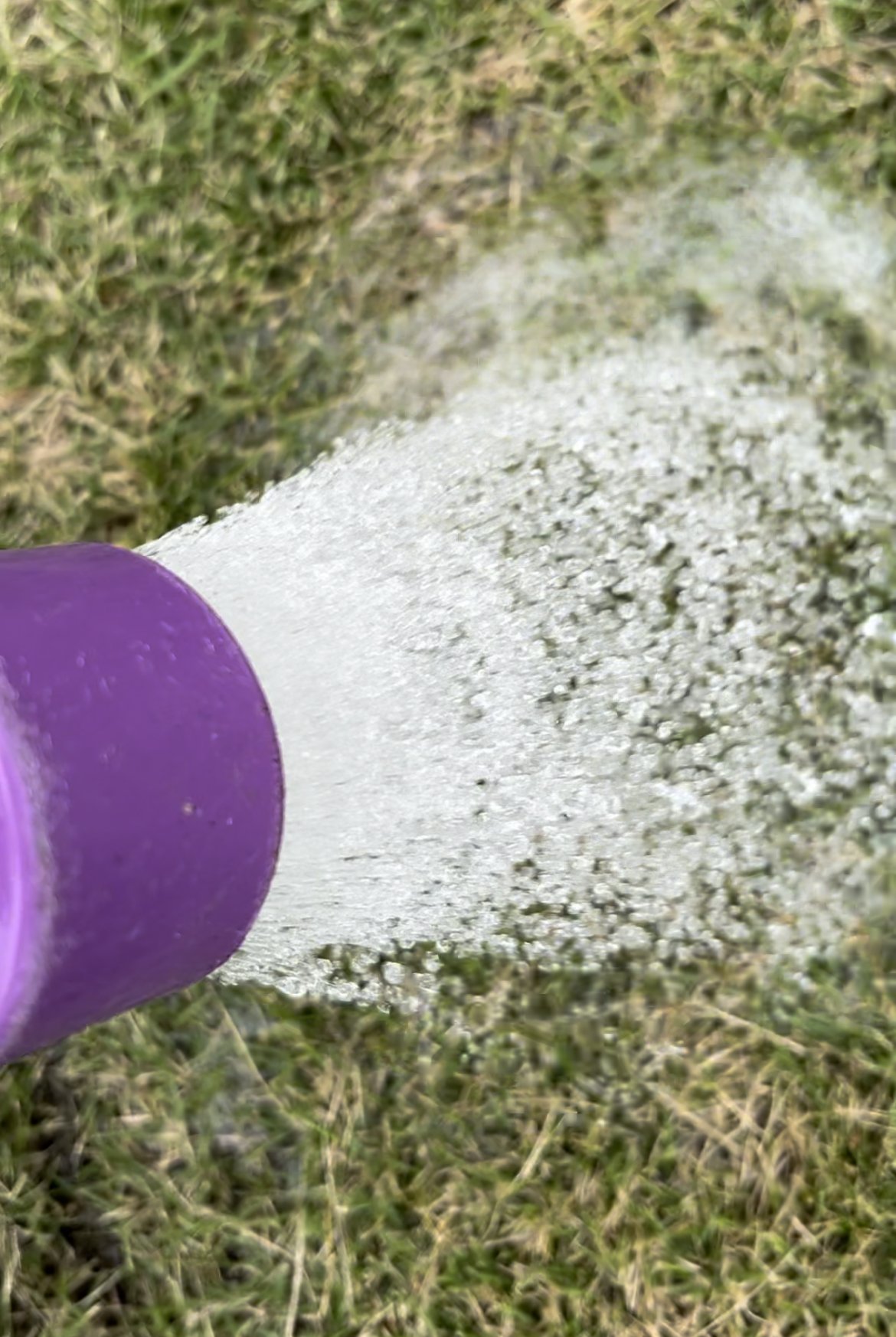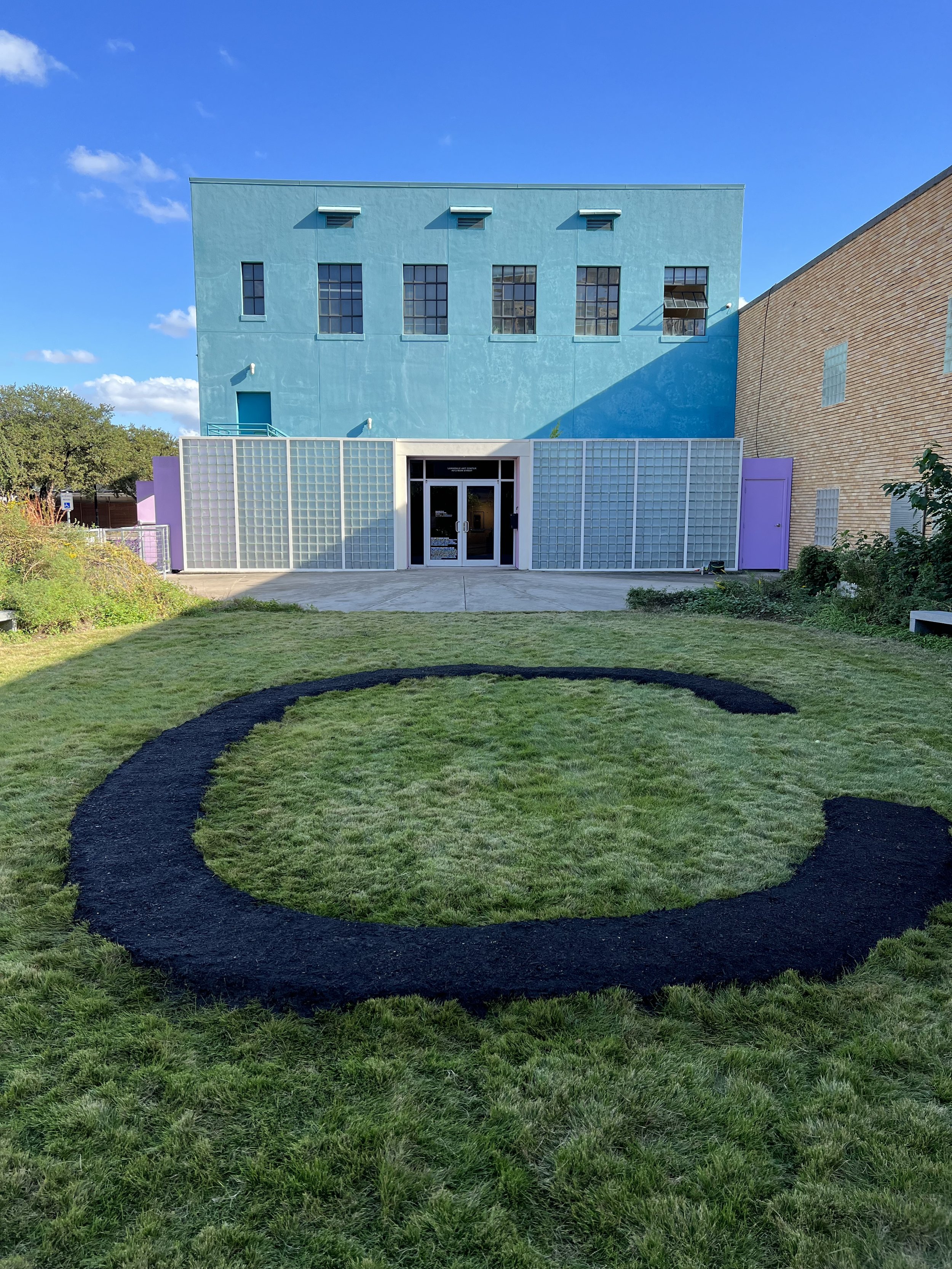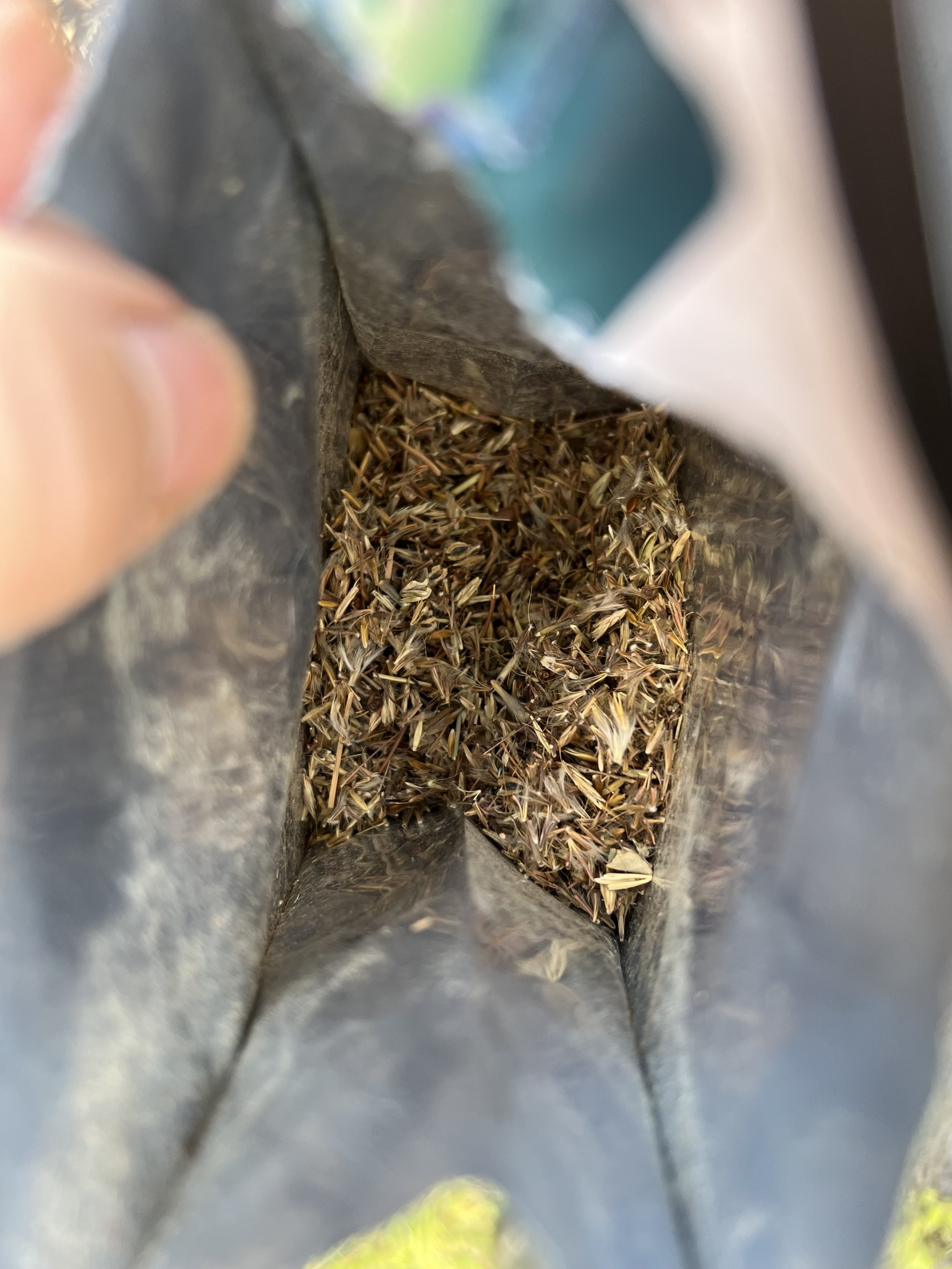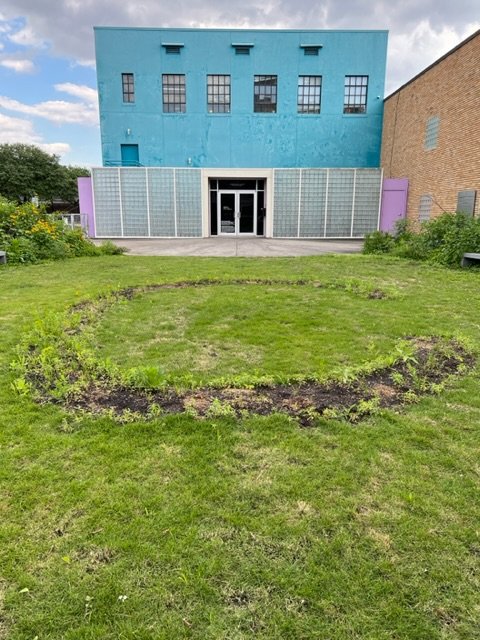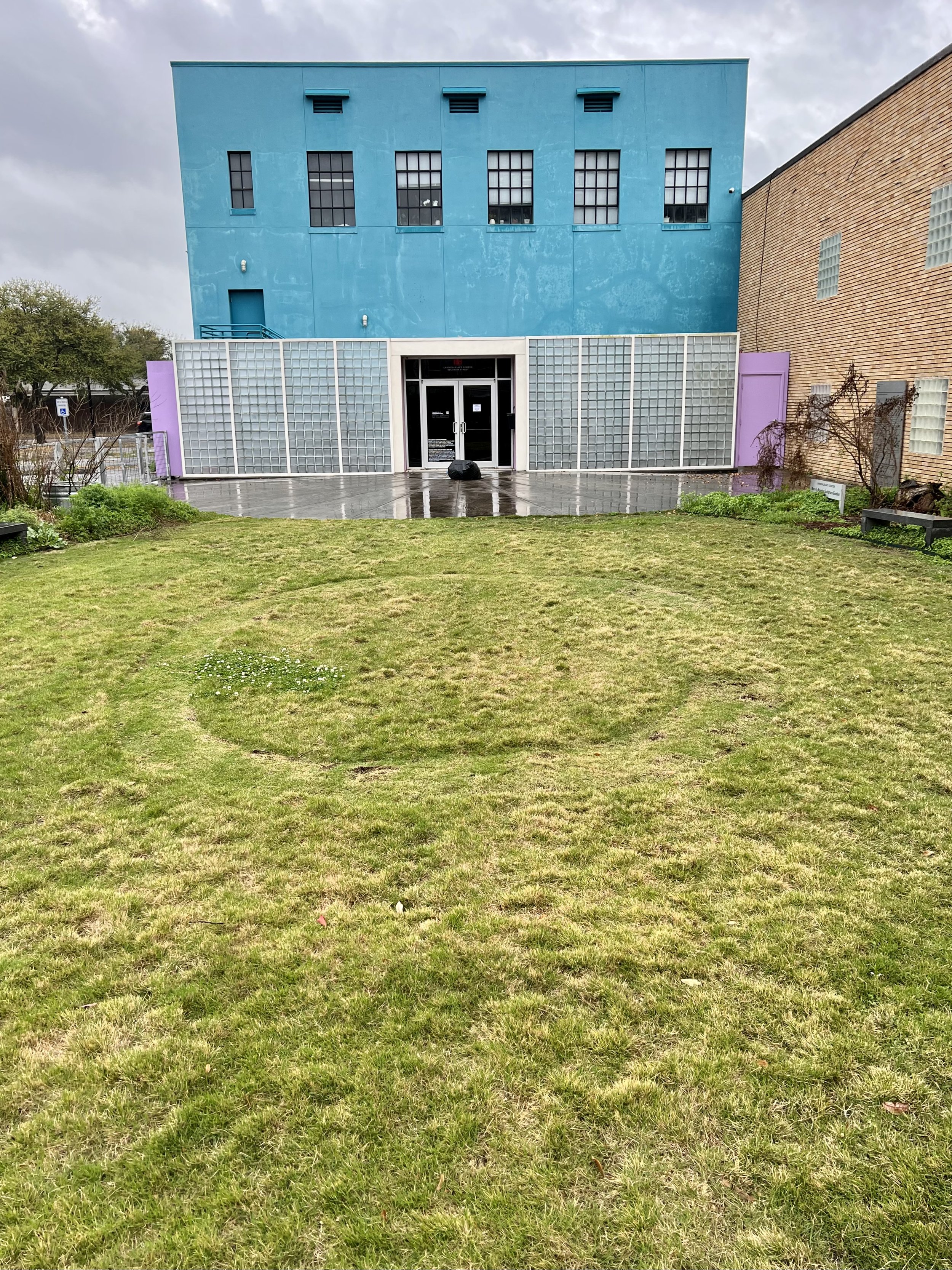“Carbon by the Yard” was a temporary relief in the shape of the Carbon element symbol, “C”. This simple gesture brought attention to the fact that gas lawnmowers emit eleven times the emissions of a new car.
Carbon by The Yard
In 2022, I transformed “Carbon by the Yard” piece into “CARBONsink ” using solarization and regeneration instead of herbicides to transform the turfgrass into biology. I then seeded it with wildflowers. The new piece soaks up rainwater, stores carbon and supports pollinators.
It is important to note that the EPA estimated that non-native turfgrass monocrops use one-third of all public water. In the US, this translates to 9 billion gallons of water daily.
These two social sculptures highlight how our colonial landscape decisions impact our carbon footprints.
CARBONsink 6/8/2023
DIY- check out the steps to install your own CARBONsink.
Soak the ground.
Use the power of water in conducting heat into the plot. Proper hydration will pull heat from the surface deeper into the soil, enhancing the effectiveness of solarization.
Cover the soaked turf with two layers of cardboard. This will smother the turf grass and use the suns energy to solarize it.
Soak the cardboard layer
Layer 4”- 6” leaf mold compost. I use Nature’s Way Resources and Heirlooms.
Spread the compost evenly .
Soak the compost , and level it for sprinkling the seeds.
Sprinkle seeds generously.
The seeds come from Native American Seeds.
Make sure the seeds make good solid contact with the ground. Press them in.
April 2023
June 8,2023
July 29, 2023



